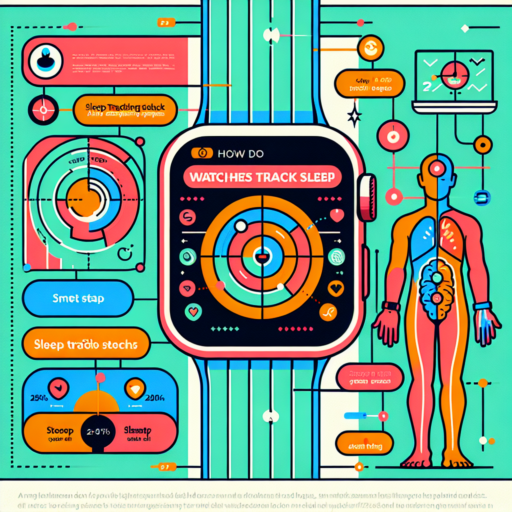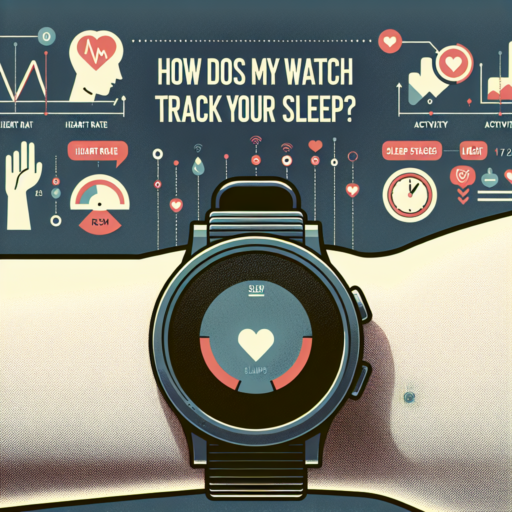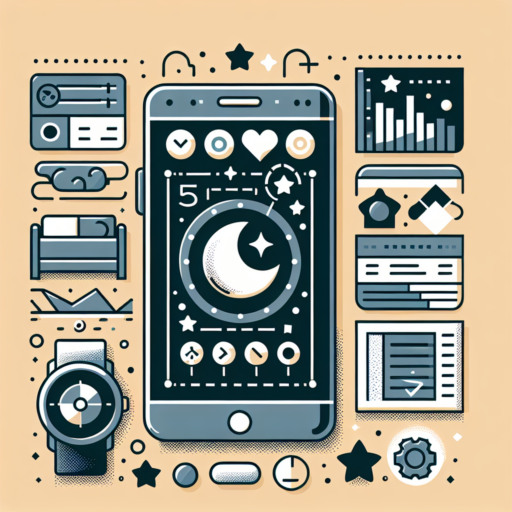What is a Sleeping Watch and How Does It Improve Sleep Quality?
A Sleeping Watch is a type of wearable technology designed specifically to monitor and improve the quality of sleep. Unlike traditional watches, these devices are equipped with various sensors and software that analyze sleep patterns, including the duration of sleep, the sleep stages, and the movements during sleep. This advanced technology enables users to gain a comprehensive understanding of their sleep health, which is crucial for making improvements.
One of the core ways a Sleeping Watch enhances sleep quality is by providing personalized insights. By evaluating the data collected, these watches can offer tailored recommendations for the user. This might include suggestions on improving sleep environment, adjusting sleeping habits, or identifying potential sleep disturbances. In essence, it transforms raw data into actionable advice.
The technology behind Sleeping Watches uses algorithms to accurately track sleep cycles, from light to deep sleep, and REM stages. This precision allows not only for a detailed analysis of sleep quality but also for the identification of trends over time. Users can leverage this data to experiment with different sleep strategies and directly observe the impact on their sleep quality, fostering a proactive approach to sleep enhancement.
The Top 5 Benefits of Using a Sleeping Watch
Monitoring sleep patterns has become a top priority for those looking to improve their overall health and well-being. Utilizing a sleeping watch can unwrap layers of valuable insights into one’s nightly rest. Below, we delve into the core advantages of incorporating this smart technology into your nighttime routine.
Better Understanding of Sleep Quality
One of the foremost benefits of a sleeping watch is the ability to quantify the quality of sleep you are getting. These devices monitor various parameters such as sleep duration, sleep cycles (including REM and deep sleep phases), and the number of awakenings throughout the night. This information can help users identify patterns or disturbances in their sleep, offering a roadmap towards enhancing sleep quality.
Enhanced Sleep Routine
By providing tangible data on when you fall asleep and wake up, sleeping watches encourage the establishment of a consistent sleep routine. Recognizing the importance of going to bed and waking up at the same times every day can significantly improve one’s circadian rhythm, leading to more restful and regenerative sleep.
Insights Into Sleep-related Problems
Sleeping watches are not just about tracking; they’re also about diagnosing potential sleep-related issues. For example, abnormalities in sleep patterns detected by the device can prompt users to seek medical advice, potentially uncovering conditions such as sleep apnea or insomnia early on. This aspect of early detection and intervention is invaluable in preventing more serious health complications down the line.
How to Choose the Best Sleeping Watch: A Buyer’s Guide
Finding the ideal sleeping watch involves more than just picking the most stylish option or the one with the highest price tag. The best sleeping watch for your needs will depend on a variety of features that monitor sleep quality, physical health, and overall well-being. When embarking on this decision-making process, it’s important to assess certain criteria to ensure that your choice enhances your sleep experience effectively.
Consider the Monitoring Features
Firstly, evaluate the monitoring features of the watch. High-quality sleep watches offer a range of functionalities, from basic sleep duration tracking to detailed insights like REM cycles, deep sleep phases, and even napping times throughout the day. For those particularly focused on improving sleep quality or understanding their sleep patterns, watches with advanced sensors that measure heart rate, oxygen levels, and body temperature throughout the night may be more beneficial.
Analyze Battery Life and Comfort
Secondly, battery life and comfort play crucial roles in the effectiveness of a sleeping watch. Opt for a device that requires infrequent charging; the last thing you want is for your watch to run out of power mid-sleep. Equally important is the comfort level of the watch. Since you’ll be wearing it throughout the night, choose a lightweight model with a soft strap that doesn’t disrupt your sleep by causing discomfort.
Look for Smart Connectivity
Lastly, consider the smart connectivity features of the watch. The best sleeping watches seamlessly sync with your smartphone or digital devices, allowing you to analyze your sleep data in detail the next morning. This feature enables you to track your progress over time and might offer personalized tips for improving sleep quality based on your unique data profile.
The Science Behind Sleeping Watches: Do They Really Work?
The exploration into the effectiveness of sleeping watches has garnered considerable attention in the world of sleep science. These innovative devices, designed to monitor and analyze sleep patterns, claim to offer a gateway to a better night’s sleep. But what is the scientific basis of these gadgets, and do they live up to their promises?
At the heart of sleeping watches lies the technology of actigraphy. Utilizing accelerometers, these devices track movement throughout the night to deduce the duration and quality of sleep. This methodology is based on the principle that motionless periods correlate with deeper sleep stages. Hence, by aggregating and analyzing this data, sleeping watches propose to provide insights into our sleep cycles, identifying disturbances or irregularities that could be affecting sleep quality.
Moreover, many of these watches incorporate additional sensors to gauge other vital indicators like heart rate and oxygen saturation—factors that play a substantial role in sleep health. By synthesizing this data, they aim to offer a comprehensive overview of one’s sleep, endorsing habits and interventions that could potentially enhance sleep quality. However, it’s crucial to approach these claims with a degree of skepticism. While there is evidence supporting the basic functionality of sleeping watches, the accuracy and relevance of the data they produce can vary significantly between devices and individuals.
Comparing the Top Sleeping Watches of 2023: Features and Prices
As technology advances, the quest for a perfect night’s sleep has led many to explore the capabilities of sleeping watches. In 2023, the market is saturated with an array of models, each boasting unique features aimed at enhancing sleep quality. This comparison delves into the standout features and prices of the top contenders, shedding light on what makes each tick.
Key Features to Consider
When comparing sleeping watches, several key features stand out. The ability to monitor sleep stages, detect sleep disturbances, and offer insights into sleep patterns is fundamental. Additionally, smart alarms that gently wake you during your lightest sleep phase can significantly enhance your morning routine. Moreover, watches offering health tracking, such as heart rate and blood oxygen levels during sleep, provide a more comprehensive overview of your nightly rest.
Price Range and Value
The price range for top sleeping watches in 2023 varies widely, starting from affordable options around $50 to high-end models surpassing $300. While evaluating price, it’s crucial to consider the value offered in terms of durability, brand reputation, and the depth of sleep analysis provided. Watches at the higher end of the price spectrum often come with advanced features like personalized sleep coaching and integration with smart home devices, potentially justifying their higher cost for those serious about sleep optimization.
No se han encontrado productos.
User Reviews: What People Are Saying About Their Sleeping Watches
The world of wearable technology has seen a significant surge in popularity, especially when it comes to devices that monitor sleep. User reviews play a crucial role in understanding the real-world performance and benefits of sleeping watches. As individuals strive for better sleep quality, many turn to these gadgets hoping for insights and improvements. Let’s delve into what users are saying about their experiences with these innovative devices.
Accuracy of Sleep Tracking: One of the most discussed aspects in user reviews is the accuracy of sleep tracking capabilities. Users often compare their perceptions of sleep quality with the data provided by their sleeping watches. The consensus suggests that higher-end models tend to offer more precise readings, including details on sleep phases such as REM and deep sleep. However, some users note discrepancies, pointing out occasions where their device may underestimate wakeful periods during the night.
Impact on Sleep Improvement: Beyond just tracking, sleeping watches promise to offer insights that can help improve sleep quality. Reviews frequently touch upon features like bedtime reminders and wake-up alarms that simulate natural sunrise. Users appreciate watches that provide actionable advice, such as suggestions for optimizing their sleep environment or altering their bedtime routines. Although experiences vary, many report positive outcomes, with noticeable improvements in their sleep patterns and overall energy levels during the day.
The diversity of user reviews highlights the personalized nature of sleep and the way individuals interact with their sleeping watches. While some find these devices to be life-changing tools for better sleep hygiene, others view them as useful yet imperfect gadgets. As technology continues to advance, user feedback remains invaluable for both consumers and manufacturers aiming to refine the functionality and accuracy of these devices.
Tips for Maximizing Your Sleeping Watch’s Effectiveness
Getting a good night’s sleep is essential for overall health and well-being. With technological advancements, sleeping watches have become a popular tool for tracking and improving sleep quality. However, maximizing the effectiveness of your sleeping watch requires more than just wearing it nightly. Here are some invaluable tips to ensure you’re getting the most out of this innovative device.
Optimize Wearability and Comfort
Firstly, ensure your sleeping watch is comfortable to wear throughout the night. An uncomfortable watch can disrupt your sleep rather than improve it. Look for a watch with a flexible, soft band, and make sure it’s not too tight or loose on your wrist. The right fit will help in accurately tracking your sleep patterns without causing any discomfort.
Understand and Utilize The Data
Simply wearing a sleeping watch is not enough; understanding the data it provides is crucial. Most sleeping watches track sleep duration, quality, and cycles. Take time to learn what these metrics mean and how they relate to your overall sleep health. Use this information to identify patterns or issues, such as periods of restlessness or consistent sleep disruptions at certain times. This insight allows you to make informed adjustments to your sleeping habits.
Lastly, consistency is key when it comes to maximizing your sleeping watch’s effectiveness. Wear it every night, and try to maintain a regular sleep schedule as much as possible. This consistency helps in collecting a more comprehensive set of data, providing a clearer picture of your sleep health over time. By following these tips, your sleeping watch can become an invaluable tool in achieving better sleep quality.
Understanding the Different Types of Sleep Tracking Technology
Sleep tracking technology has evolved significantly, offering a plethora of options for monitoring sleep patterns and understanding sleep quality. Each type of technology provides a unique approach to gathering sleep data, which can be crucial for improving overall health and well-being. In exploring the different types of sleep tracking technology, it’s essential to consider the various devices and methods available.
Wearable Sleep Trackers
Among the most popular forms of sleep tracking technology are wearable devices, such as smartwatches and fitness bands. These devices typically utilize motion sensors (accelerometers) to monitor movements during sleep, estimating sleep stages and duration. Many also incorporate heart rate sensors to provide a more comprehensive view of sleep quality, detecting changes in sleep stages based on heart rate variability.
Bedside Devices
Another category of sleep tracking technology consists of bedside devices, which often employ advanced methods such as sonar technology or bio-sensing to monitor sleep without the need for direct physical contact. These devices can track respiratory rate, body movement, and even environmental factors like room temperature and noise levels, offering insights into the sleep environment’s impact on sleep quality.
Smartphone Apps
For those seeking a more accessible option, smartphone apps represent a convenient method of sleep tracking. By utilizing the phone’s built-in sensors, these apps can analyze movement and sound patterns to estimate sleep metrics. While not as precise as wearable or bedside devices, smartphone apps provide a useful starting point for individuals looking to gain initial insights into their sleep patterns.
Frequently Asked Questions About Sleeping Watches
When it comes to understanding the intricacies of sleeping watches, numerous questions arise, reflecting the growing interest in how technology can aid in improving sleep quality. This section aims to demystify some of the common inquiries surrounding these innovative devices.
How Do Sleeping Watches Track Sleep?
Sleeping watches use a combination of motion detection and heart rate monitoring to track when you’re asleep and the quality of your slumber. By analyzing movements through accelerometers and gyros, they can differentiate between light, deep, and REM sleep cycles, offering insights into your sleep patterns.
Can Sleeping Watches Improve Sleep Quality?
While sleeping watches themselves cannot directly improve sleep quality, the data they provide can be invaluable. By understanding your sleep cycles and pinpointing irregularities such as frequent awakenings or light sleep, you can make informed lifestyle changes or seek medical advice to enhance sleep quality.
Are All Sleeping Watches the Same?
No, there is a wide variety in the accuracy and features of sleeping watches. Some offer basic sleep tracking, while others provide detailed analyses including oxygen levels, snoring, and personalized sleep coaching. When choosing a sleeping watch, it’s crucial to consider what metrics are most important for your sleep improvement journey.
Sleeping Watches vs. Traditional Sleep Aids: Which is Better?
When considering improving sleep quality, many people find themselves at a crossroads: choosing between innovative sleeping watches and traditional sleep aids. This article delves into their efficiency, user experience, and overall impact on sleep improvement, aiming to shed light on this modern-day conundrum.
Understanding Sleeping Watches
Sleeping watches, a product of the wearable technology boom, have taken the health and wellness world by storm. These devices offer a non-invasive method to track and analyze sleep patterns, providing users with data-driven insights into their sleep quality, duration, and disturbances. The appeal of sleeping watches lies in their ability to offer personalized sleep improvement suggestions based on the collected data, making them a popular choice for tech-savvy sleep optimization enthusiasts.
Exploring Traditional Sleep Aids
In contrast, traditional sleep aids encompass a broad range of products and practices, from over-the-counter (OTC) and prescription medications to herbal teas and relaxation techniques. These aids have been the go-to solution for sleep disturbances for generations. Their effectiveness, familiarity, and immediacy in inducing sleep make them continually relevant in today’s fast-paced world. However, concerns about dependency, side effects, and the long-term impacts of pharmacological solutions drive a growing interest in alternative aids.
Both sleeping watches and traditional sleep aids present viable solutions for improving sleep quality. The former offers a modern approach focused on information and personal adjustments, while the latter provides immediate solutions with a long history of use. Each has its benefits and considerations, making the choice highly individual based on personal health, lifestyle, and sleep goals.




